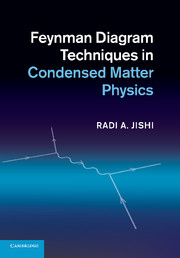Book contents
- Frontmatter
- Contents
- Preface
- 1 A brief review of quantum mechanics
- 2 Single-particle states
- 3 Second quantization
- 4 The electron gas
- 5 A brief review of statistical mechanics
- 6 Real-time Green's and correlation functions
- 7 Applications of real-time Green's functions
- 8 Imaginary-time Green's and correlation functions
- 9 Diagrammatic techniques
- 10 Electron gas: a diagrammatic approach
- 11 Phonons, photons, and electrons
- 12 Superconductivity
- 13 Nonequilibrium Green's function
- Appendix A Second quantized form of operators
- Appendix B Completing the proof of Dzyaloshinski's rules
- Appendix C Lattice vibrations in three dimensions
- Appendix D Electron-phonon interaction in polar crystals
- References
- Index
Appendix D - Electron-phonon interaction in polar crystals
Published online by Cambridge University Press: 05 April 2013
- Frontmatter
- Contents
- Preface
- 1 A brief review of quantum mechanics
- 2 Single-particle states
- 3 Second quantization
- 4 The electron gas
- 5 A brief review of statistical mechanics
- 6 Real-time Green's and correlation functions
- 7 Applications of real-time Green's functions
- 8 Imaginary-time Green's and correlation functions
- 9 Diagrammatic techniques
- 10 Electron gas: a diagrammatic approach
- 11 Phonons, photons, and electrons
- 12 Superconductivity
- 13 Nonequilibrium Green's function
- Appendix A Second quantized form of operators
- Appendix B Completing the proof of Dzyaloshinski's rules
- Appendix C Lattice vibrations in three dimensions
- Appendix D Electron-phonon interaction in polar crystals
- References
- Index
Summary
Polarization
Polar crystals are generally semiconductors or insulators that, at low temperatures, have fully occupied valence bands and empty conduction bands. It is possible, however, to introduce electrons into the conduction bands. For example, absorption of photons of appropriate energy leads to the promotion of electrons from the occupied valence bands to the empty conduction bands. Raising the temperature produces a similar effect. In semiconductors, doping introduces free electrons into the lowest conduction band (or free holes into the top valence band). The electron–phonon interaction in these systems is not adequately described by the rigid-ion approximation. In an optical mode, the ions in the unit cell move relative to each other, resulting in an oscillating dipole moment which, in turn, gives rise to an electric field that acts on the electrons. The electron–LO phonon interaction in polar crystals is mainly the result of this coupling of electrons to the induced electric field.
We consider the case of a cubic crystal with two atoms per unit cell. The ionic charges are ±e*. The volume of the crystal is V, and the number of unit cells is N. In the long wavelength limit (q → 0), the two ions in the unit cell vibrate out of phase, while the displacements in one cell are almost identical to those in a neighboring cell. We denote by u+ (u−) the displacement of the positive (negative) ion within a unit cell (see Figure D.1).
- Type
- Chapter
- Information
- Feynman Diagram Techniques in Condensed Matter Physics , pp. 385 - 389Publisher: Cambridge University PressPrint publication year: 2013



